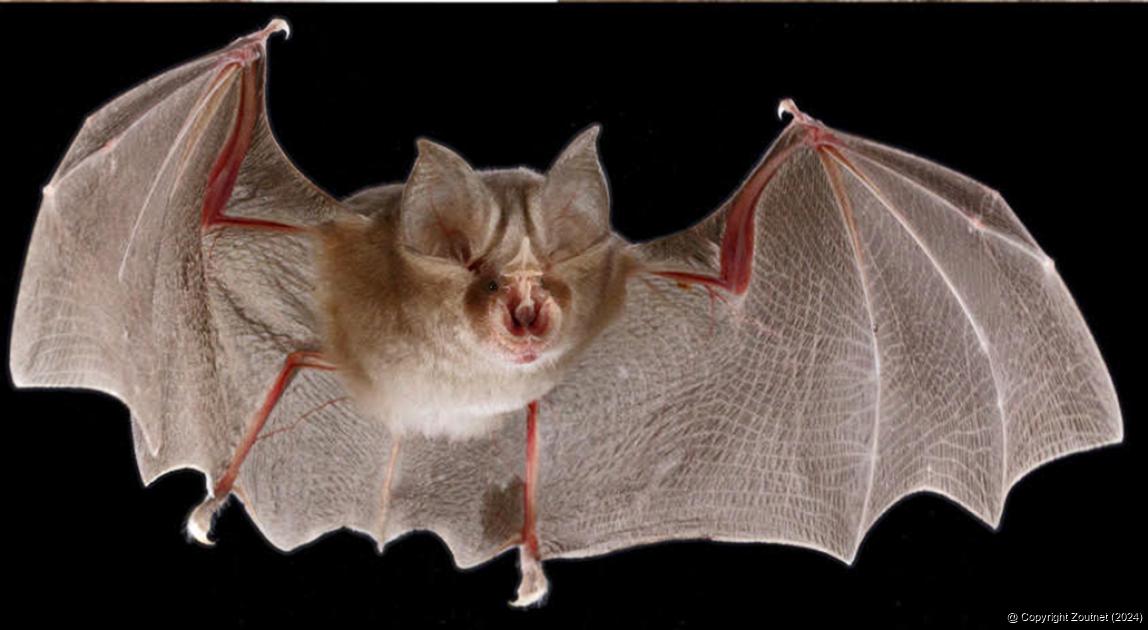

ADVERTISEMENT:

Photographs showing the different views of the newly described Gorongosa horseshoe bat. Copyright: Piotr Naskrecki.
New bat species discovered in the Soutpansberg
A new bat species has been discovered in the Soutpansberg.
According to a new study published in the Zoological Journal of the Linnean Society, the diversity of the southern African horseshoe bats has been increased by three species.
These species were detected with the help of Prof Peter Taylor and his students at the University of Venda. They made use of modern technology such as bat detectors that recorded the echolocation calls of bats.
“My students and I were recording this strange bat in the Soutpansberg Mountains with a peak echolocation call frequency of 100 kHz, which is not known to be associated with any described species,” said Taylor. “The species with the closest call is Swinny’s horseshoe bats, but this species echolocates in a different frequency range of around 106 kHz,” he further explained.
This led researchers to investigate further. More bats were captured from two caves in Mozambique to establish how this 100kHz-frequency bat is distinct in its own way. According to Taylor, the bats were found to be very similar in appearance to the South African Swinny’s bat. However, a range of morphological characteristics and differences in DNA composition that set the new species apart from the Swinny bat was found.
Molecular DNA analysis and morphological studies of the new bat’s skull, nose leaf and penis bone led Taylor and a large team of co-workers – including experts from the University of Harvard – to identify the bat positively as a unique species in its own right.
In addition, their efforts and study also highlighted the narrow distribution range of these new species, most of which are associated with mountain or hill habitats.
The new species, which was named R.rhodesiae, can be found in South Africa along the norther parts of the escarpment from KwaZulu-Natal further northwards to the Soutpansberg Mountains, extending into Zimbabwe, Zambia, Angola, Malawi and Mozambique and possibly Tanzania (following mountains associated with Africa’s Rift Valley).
One of the species, named Rinolophus gorongosae, appears to occur only within the borders of the Gorongosa National Park in Mozambique and nearby Mount Inago. The studies have also found that, weighing in at a mere 5g, this dwarf species of bat has become Africa’s smallest horseshoe bat.
Taylor highlighted the important role the study played in showing the importance of the role of ancient mountain-forming processes in the speciation of horseshoe bats. “This has important conservation implications as it reveals that species have narrower ranges than previously thought, and current threats to mountain habitats, such as burning, afforestation, alien invasions and climate change, can greatly increase the extinction risk for these vulnerable species,” said Taylor.
News - Date: 17 May 2018

Recent Articles
-

Former mayor of Tshwane, Dr Murunwa Makwarela, passes away
26 April 2024 By Victor Mukwevho -

Community relieved after suspect gets caught
26 April 2024 By Elmon Tshikhudo -

Ystervrou van die Bosveld oorlede
26 April 2024 By Pétria de Vaal -

Arrestasie ná boere dreig om te skiet
26 April 2024 By Andries van Zyl
Search for a story:

ADVERTISEMENT


Isabel Venter
Isabel joined the Zoutpansberger and Limpopo Mirror in 2009 as a reporter. She holds a BA Degree in Communication Sciences from the University of South Africa. Her beat is mainly crime and court reporting.
Email: [email protected]

ADVERTISEMENT:


